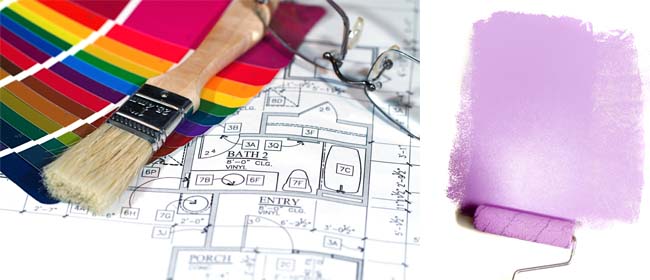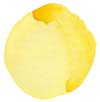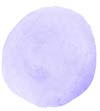
Have you ever noticed how different you feel in some rooms to others? A room painted with red walls can make you feel energised or excited, while a room with blue walls can promote calmness and relaxation. Colour has the power to transform not only our homes but the way we feel, our behaviour and our general efficiency.
“Just like sound or your favourite music or a song can uplift your spirit,” says colour therapist Thelma van der Werff of Colour Comfort, “so can the energy of colour change the way you feel.”
What colours feature in your home?
Take a look around your home and you’ll probably see a pattern. It might be vibrant pick-me-up colours or calming, back-to-nature hues. While we sometimes experiment with different colours, most of us gravitate towards certain types of shades.
“Some colours you prefer above others,” says Thelma, “and these colour choices are revealing a story. Your favourite colour or colours reveal aspects of your personality and talents. The colours you dislike will reveal your challenges or stumbling blocks.”
 For example, if you’ve never worn red or feel reluctant to wear red – a colour that energises, stimulates and promotes courage and determination – it may indicate a lack of energy or exhaustion, or a belief that you cannot change circumstances or situations in your life, says Tanja Clauberg, also from Colour Comfort.
For example, if you’ve never worn red or feel reluctant to wear red – a colour that energises, stimulates and promotes courage and determination – it may indicate a lack of energy or exhaustion, or a belief that you cannot change circumstances or situations in your life, says Tanja Clauberg, also from Colour Comfort.
“It may be difficult or hard work to materialise your ideas and your visions. But it’s not so much, ‘Oh, I can’t wear red.’ Look further. ‘What has made me stop wearing red?’ A lot of people, if they’ve started wearing red again they’ve become motivated and they start getting encouraged. They’ve got a new sense of determination and strength.”
Reprogramme a behaviour with colour
To reprogramme a behaviour, you can introduce a colour that reflects aspects you want to change or improve, whether it’s on your walls, in your clothes or other objects. “You will use this colour as an anchor to change unconscious unwanted behaviour into conscious wanted behaviour,” says Thelma.
The colour choices in clothing are the easiest to change, and these choices can change per day and even per hour.
“Watch young children how they love to change their clothes several times a day,” says Thelma. “The colours in our clothing are actually reflecting how we feel, how we want to present ourselves and what drives and motivates us.”
Conversely, the colours in our environment reflect what we need in order to feel safe (in our home) or what we need in order to work more efficiently (in the office), says Thelma.
 “You can have your entire house painted yellow, but never wear this colour. This indicates that you need the characteristics of yellow to feel comfortable and safe but you are not expressing these characteristics yourself. For that reason it is sometimes easier to paint a wall in a colour and look at this colour from a distance instead of wearing the colour and allowing this colour to really come very close to you, to be precise, on your body.”
“You can have your entire house painted yellow, but never wear this colour. This indicates that you need the characteristics of yellow to feel comfortable and safe but you are not expressing these characteristics yourself. For that reason it is sometimes easier to paint a wall in a colour and look at this colour from a distance instead of wearing the colour and allowing this colour to really come very close to you, to be precise, on your body.”
However, just as colour can bring about a positive response, it can also produce a negative response if you overdose on it.
 “Let’s take red, for example,” says Tanja. “If you overdose on red you’re probably going to get a very dominant person. It creates aggression. People who wear red feel excited. They’re ambitious. They experience a lot of passion for life. They’re not afraid to show their emotions. They’re very strong and confident people. However, if you overdose on it you can become very aggressive and very dominant and dogmatic.”
“Let’s take red, for example,” says Tanja. “If you overdose on red you’re probably going to get a very dominant person. It creates aggression. People who wear red feel excited. They’re ambitious. They experience a lot of passion for life. They’re not afraid to show their emotions. They’re very strong and confident people. However, if you overdose on it you can become very aggressive and very dominant and dogmatic.”
 Green on the other hand is balancing and harmonising, and possesses a soothing influence on body and mind. It brings peace, comfort, hope, nurturing, and healing. Research shows that patients recovering from surgery will leave hospital sooner and need fewer painkillers if they’re placed in a room that has a view of nature and greenery. However, too much green can make a person become indecisive and experience a lack of direction.
Green on the other hand is balancing and harmonising, and possesses a soothing influence on body and mind. It brings peace, comfort, hope, nurturing, and healing. Research shows that patients recovering from surgery will leave hospital sooner and need fewer painkillers if they’re placed in a room that has a view of nature and greenery. However, too much green can make a person become indecisive and experience a lack of direction.
 Pink is another calming colour, associated with gentleness, softness, romance, compassion and femininity. It is nurturing and physically soothing, and colour therapists may use it to help heal grief and sadness. But if you overdose on pink, it can be physically draining and make you feel weaker and less effective.
Pink is another calming colour, associated with gentleness, softness, romance, compassion and femininity. It is nurturing and physically soothing, and colour therapists may use it to help heal grief and sadness. But if you overdose on pink, it can be physically draining and make you feel weaker and less effective.
While bright colours like red, orange and yellow make us feel dynamic and positive, colours on the opposite side of the colour wheel can balance them out.
“You may find that somebody wears red but they are balancing it well with green, or possibly they might even be bringing a bit of pink into it so they are balancing it nicely, bringing out the soft, gentle side of it,” says Tanja.
Change the atmosphere of a room with colour
The atmosphere of a room can also be changed by the colour choices of paint and furnishings. Different colours can warm up or cool down the mood of a room to suit its purpose.
 Yellow, for example, is a sunny, bright and vibrant colour. It can lift our spirits, promote confidence and optimism and provide warmth. It can stimulate mental activity and help us stay alert, making it ideal when studying. Hence, it’s the perfect colour for rumpus rooms and studies, and for rooms on the south side.
Yellow, for example, is a sunny, bright and vibrant colour. It can lift our spirits, promote confidence and optimism and provide warmth. It can stimulate mental activity and help us stay alert, making it ideal when studying. Hence, it’s the perfect colour for rumpus rooms and studies, and for rooms on the south side.
“Yellows are good for creating a cheery atmosphere and for warming places up,” says Resene colour consultant Sarah Gregory. “If a room is situated on the south side of the house, we can use colours like yellow to try and brighten it up and combat that chill.”
 Orange is another great colour for activity.
Orange is another great colour for activity.
“It’s really good in a rumpus room or a play room,” says Sarah. “It’s the same as red with that stimulating activity but it’s not as vibrant. If you do too much though it can create anxiety.”
Reds are ideal for dining rooms because it’s a colour that stimulates appetite, and that’s why you often see it in restaurants.
“It also gives us energy for conversation, so it’s really good for dinner parties and dining rooms,” says Sarah.
Resene Red Berry and Resene Pohutukawa are two colours Sarah often uses in dining room situations, but they’re not colours she would recommend for the bedroom.
“Obviously red’s a passionate colour, but it’s just too much for a bedroom. You wouldn’t be able to sleep.”
 Rather, she recommends greens and blues if you want a calming effect.
Rather, she recommends greens and blues if you want a calming effect.
“The blues that are probably used most in bedrooms are more like your duck egg blues, like Resene Half Periglacial Blue and Resene Tiara – those kind of blues which give that ocean feel rather than the full-on pastel blue. With the greens, it’s the yellow-based greens for bedrooms rather than the greyer ones.”
 If you want to instill enthusiasm, appreciation and openness to change, you might like to try wearing or introducing furnishings with magenta.
If you want to instill enthusiasm, appreciation and openness to change, you might like to try wearing or introducing furnishings with magenta.
“It’s really one of my favourites,” says Tanja, “because it screams at you. You may have suffered somewhere along the line with emotional disappointments or had love that hasn’t been returned to you or not reciprocated. When you start wearing or using magenta you’re actually overcoming that feeling. You’re saying, ‘It’s all right that it’s happened but I can move forward.’ It also readies you for a new change or a new direction in life. It supports you to gain enthusiasm and appreciation. It’s often a colour to help materialise a person’s personal ideas. It also increases your sensitivity and eye for detail. You appreciate the simple little things in life.”
 Violet and purple are calming for the body and mind. They encourage contemplation and are good for meditation and prayer. Both bring sleep, and soothe emotional and mental stress, so they’re ideal for the bedroom.
Violet and purple are calming for the body and mind. They encourage contemplation and are good for meditation and prayer. Both bring sleep, and soothe emotional and mental stress, so they’re ideal for the bedroom.
Brown is warm and nurturing and symbolises stability and grounding. It’s often chosen when solidity and simplicity are required.
“If you look at a lot of people’s homes,” says Tanja, “possibly they’ll have their neutral brown colours because it’s where they want to be calm, where they want to be relaxed, not have too much excitement.
“You can counter that with brighter colours, but remember, if you’re going to have your red lounge you must be prepared to accept the emotions that red is going to create. It’s a very strong colour. It’s a very active colour, a very intense colour. If you surround yourself with too much red it can create aggression, stubbornness and pigheadedness.”
Tanja is very excited by the natural power of colours and believes both your attire and your home environment, and as a consequence your wellbeing, can be enhanced with the use of colour.
“That is what these colours do. You can preempt or change a perception of somebody purely by the choice of colour. It’s a very different way of doing things. It’s non invasive, non intrusive.”
 My Favourites
My Favourites









Speak Your Mind